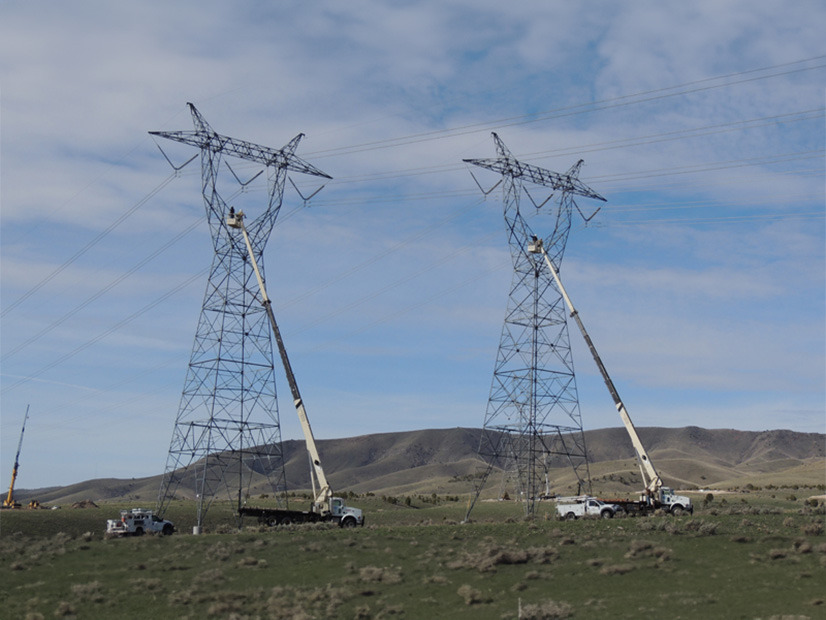
Although PacifiCorp has formally committed to joining CAISO’s Extended Day-Ahead Market (EDAM), the utility is still voicing concerns about a competing day-ahead market, SPP’s Markets+, in a FERC filing.
In its April 29 comments, PacifiCorp asked FERC to reject the proposed Markets+ tariff, but allow SPP to refile it without the tariff’s “Markets+ transmission contributors” transmission availability option. The utility said the option “purportedly empowers transmission customers to ‘contribute’ their transmission rights on nonparticipating systems.”
In a separate filing, NV Energy also expressed concerns regarding the “transmission contributors” option.
But other comments filed by the April 29 deadline — including those from three Arizona utilities and a member of the Arizona Corporation Commission — supported the Markets+ tariff.
Transmission Providers, Contributors
PacifiCorp became the first Western entity to formally commit to one of the two competing day-ahead markets April 26 when it signed an implementation agreement with CAISO for EDAM. (See PacifiCorp Fully Commits to CAISO’s EDAM.)
But as a major Western grid operator, PacifiCorp is concerned about potential impacts of transmission provisions in Markets+.
Under the proposed tariff, one source of transmission would be from transmission service providers who sign a Markets+ agreement. Transmission could also come from market participants who contribute their rights from transmission providers who aren’t Markets+ participants.
But it’s unclear how those so-called Markets+ transmission contributors “would be entitled to make such decisions on behalf of transmission providers,” PacifiCorp said.
In addition, allowing transmission customers to potentially offer transmission rights to different day-ahead markets “is uneconomic and inefficient,” PacifiCorp said, and could potentially undermine EDAM operations.
NV Energy said it has asked for clarification on the issue of contributors’ transmission rights. Although SPP has proposed a “service flow constraint” respecting transmission contributors’ and transmission service providers’ capabilities, the tariff “is not clear as to the entity that can establish the Service Flow Constraint and ‘carve out’ this transmission capacity from the market,” NV Energy said.
NV Energy also urged SPP to keep working to ensure interoperability between Markets+ and Western Power Pool’s Western Resource Adequacy Program (WRAP).
“SPP should confirm that the Markets+ tariff maintains the ability of the transmission service providers participating in Markets+ to provide support to WRAP wheel-out and wheel-through transactions on a firm basis, even if the need arises after the close of the day-ahead market run,” NV Energy said.
Arizona Support
Three Arizona utilities — Arizona Public Service (APS), Tucson Electric Power (TEP) and Salt River Project (SRP) — supported the Markets+ tariff, pointing to the proposal’s independent governance and the stakeholder-driven development of the tariff.
They view the requirement that Markets+ participants be WRAP members as another plus.
“The defined RA standard for WRAP ensures Markets+ programs will maintain adequate resources,” TEP said in its filed comments. “The requirement also establishes uniformity, which imparts a high degree of simplicity and transparency for resource adequacy in Markets+.”
The utilities’ comments echo those in an April letter to SPP from 26 entities supporting Markets+. (See 26 Western Entities Signal Continued Support for Markets+.)
Commissioner Nick Myers of the Arizona Corporation Commission also weighed in to support Markets+ “as a market option in the Western region.”
Myers said that as a member of the Markets+ State Committee (MSC), he could contribute to discussions on addressing different greenhouse gas policies within the market.
“The Markets+ tariff strikes a balance by adopting a market design that enables states with GHG regulations to meet their identified goals without holding market participants in other states to the same GHG policy requirements,” Myers said in filed comments.
SPP filed its proposed Markets+ tariff with FERC on March 29 and asked FERC to issue an order on the tariff by July 31. (See SPP Files Proposed Markets+ Tariff at FERC.)
SRP was among commenters who supported that time frame.
“Approval on this timeline will provide Salt River Project and potential market participants certainty regarding market rules and allow the timely development and testing of the systems and processes necessary to implement Markets+,” SRP said in filed comments.